The 5.45x39mm RPK-74 was an evolutionary development of Mikhail Kalashnikov’s original 1940’s-vintage AK-47. The earliest AK (Avtomat Kalashnikova) rifle fired the then radically new M43 7.62x39mm round and was built around a stamped steel receiver. This 35″, 7.7-lb. infantry rifle legitimately changed the world.
Alas, those early stamped receivers weren’t quite ready for prime time, so the rifle was redesigned around a heavy and expensive milled version cut from a big chunk of forged steel. This basic rifle soldiered on until 1959 when the stamped steel receiver was finally perfected. This optimized weapon was christened the AKM (Avtomat Kalashnikova Modernizirovanny). Most of what we call AK-47s on this side of the pond today are actually AKMs. (To learn more, read the differences between the AK-47 and the AKM.)
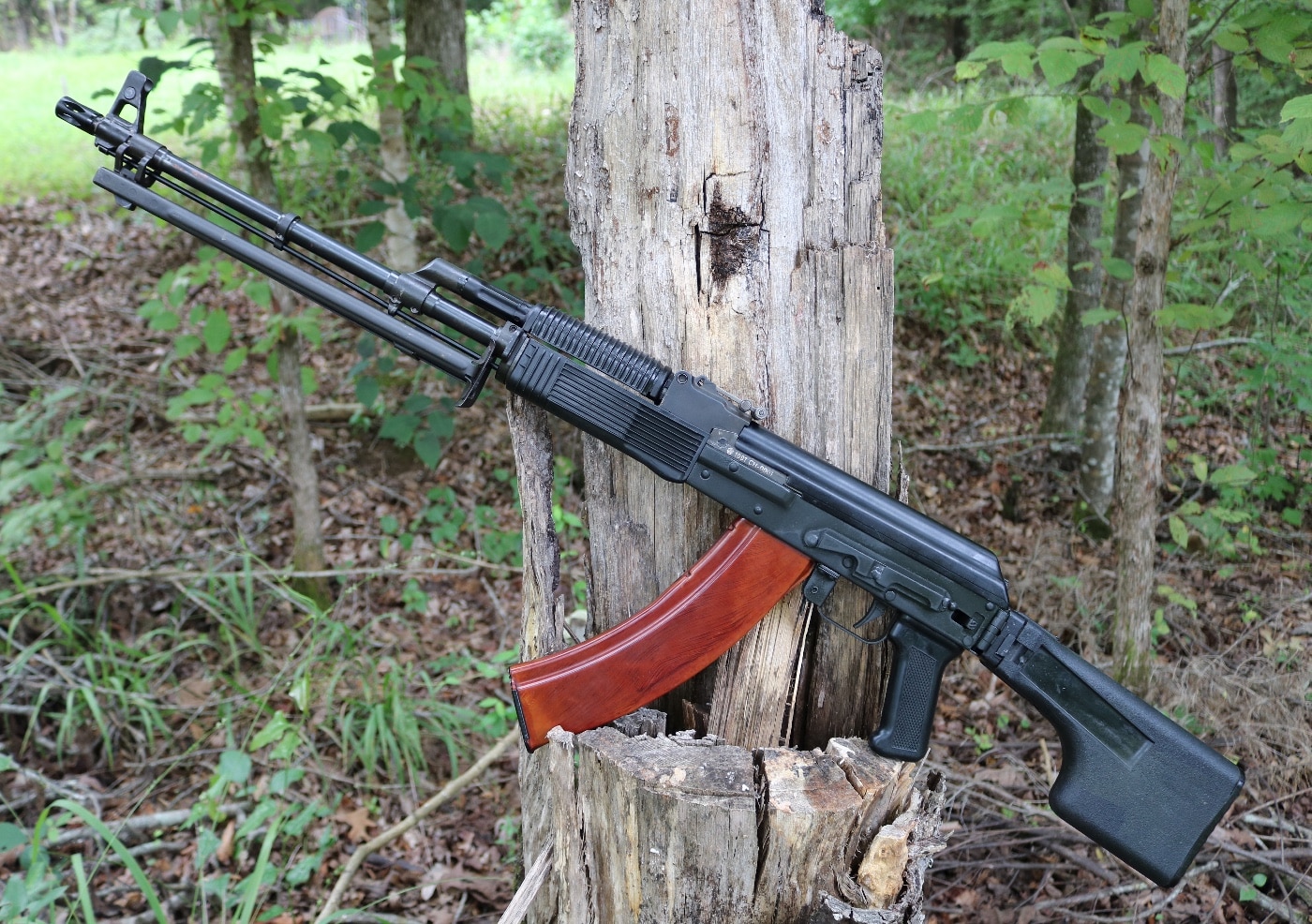
In 1961, the Soviets debuted the RPK (Ruchnoy Pulemyot Kalashnikova). The RPK fired the same 7.62x39mm round, but it was built around a heavier, more robust stamped receiver. It also sported a longer, beefier barrel, an integral folding bipod, and a curious clubfoot stock. The RPK could use standard 30-round AKM magazines. However, it also accepted longer 40-round versions as well as two different varieties of 75-round drum.
5.45x39mm — Downsizing the RPK
By the 1970s the US military had fully transitioned to the lightweight, high-velocity 5.56x45mm round fired through the M16 rifle, and the Soviets were growing jealous. (Be sure to read about the evolution of the M16.) They tasked Comrade Kalashnikov to build them a new family of weapons around the weirdly adorable 5.45x39mm round.
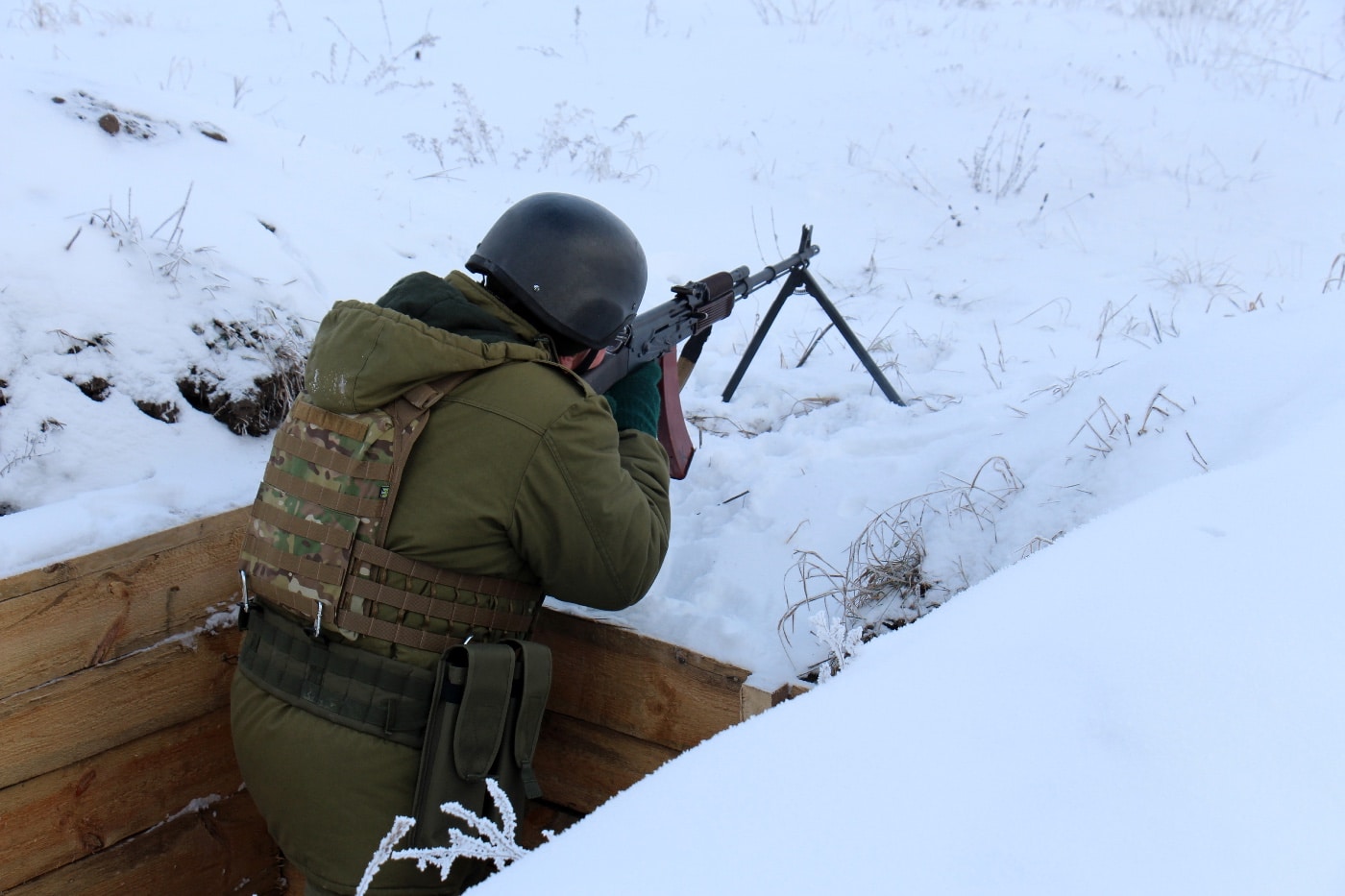
The 5.45mm round featured an unnaturally long, skinny bullet and was much lighter and faster than the previous 7.62x39mm M43. By skillfully crafting the FMJ bullets with a small air space under the jacket in the tip, they also created a round that reliably tumbled on impact. This resulted in some truly ghastly effects. Speaking solely for myself, the soft-shooting 5.45x39mm round is a personal fave.
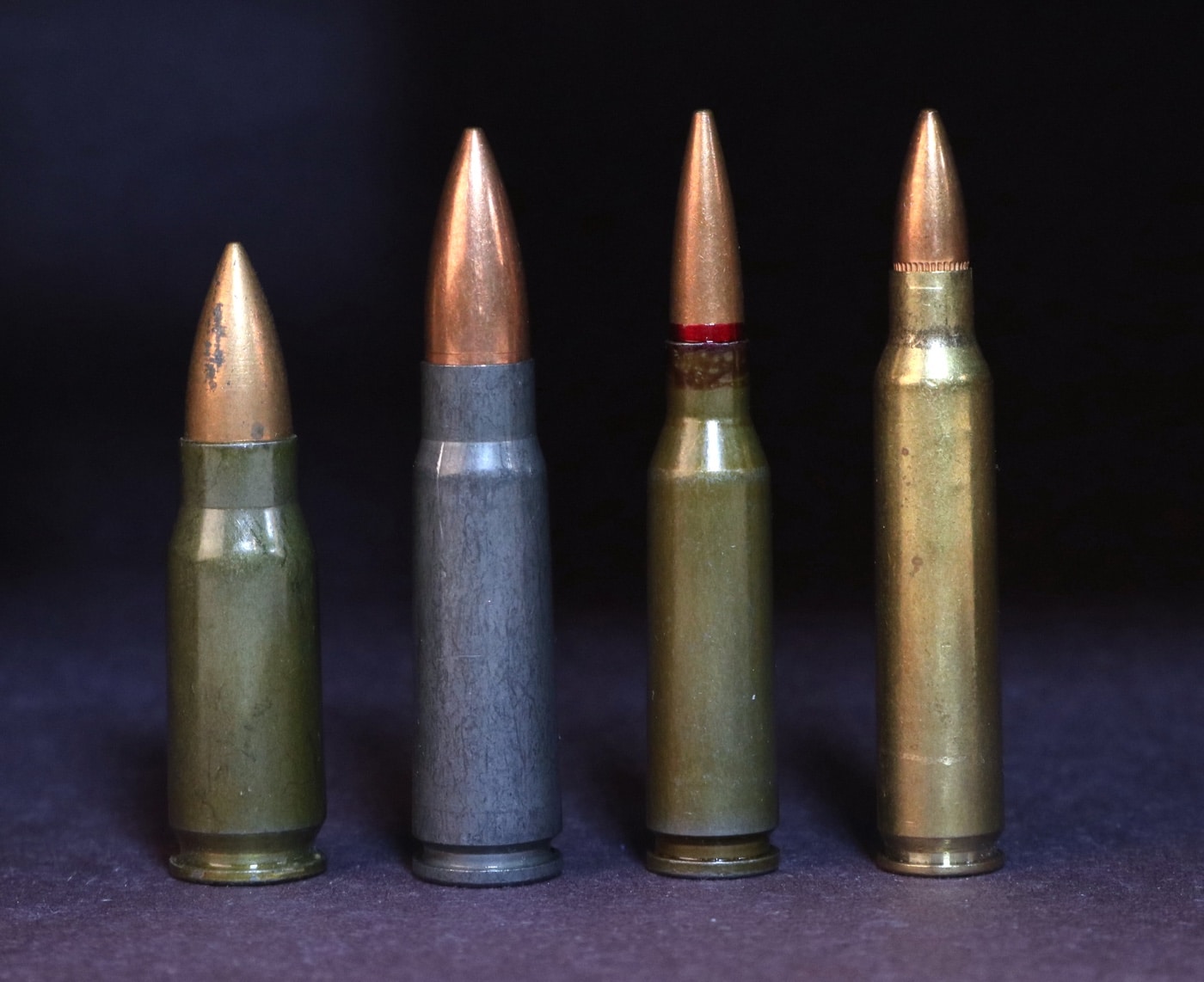
The end result was the AK-74. This firearm was built around a stamped steel receiver and was specifically designed for the new lighter cartridge. At a glance, the AK-74 can be differentiated from the previous AKM by the less-pronounced curve of the polymer magazine and the curiously complicated, yet effective muzzle brake. The muzzle brake works by redirecting some of the muzzle blast to the sides, and it will reliably clear your sinuses on the range.
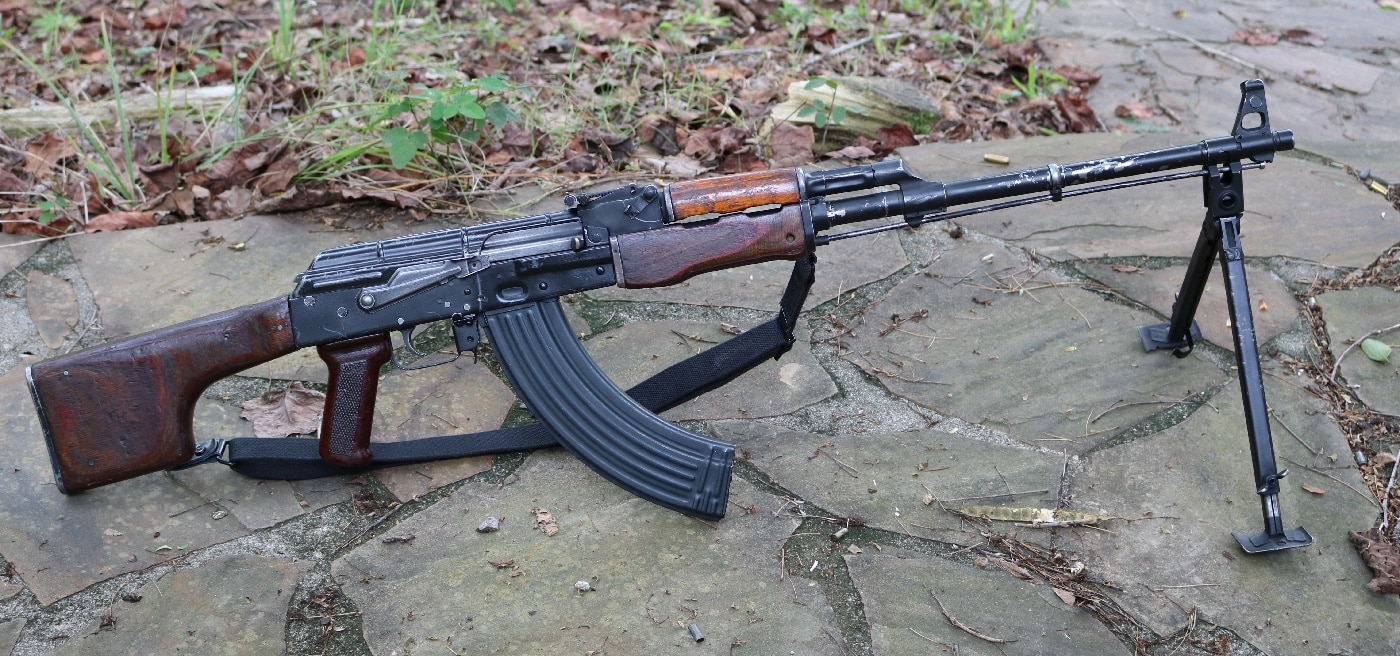
Simultaneously with the AK-74, Kalashnikov’s team developed the RPK-74. Like the RPK that preceded it, the RPK-74 was longer and heavier than the parent infantry rifle. It retained the clubfoot stock and folding bipod but dispensed with the complex muzzle brake in favor of a simple birdcage flash suppressor. Though prototypes were produced, there never was a general-issue drum created for the RPK-74.
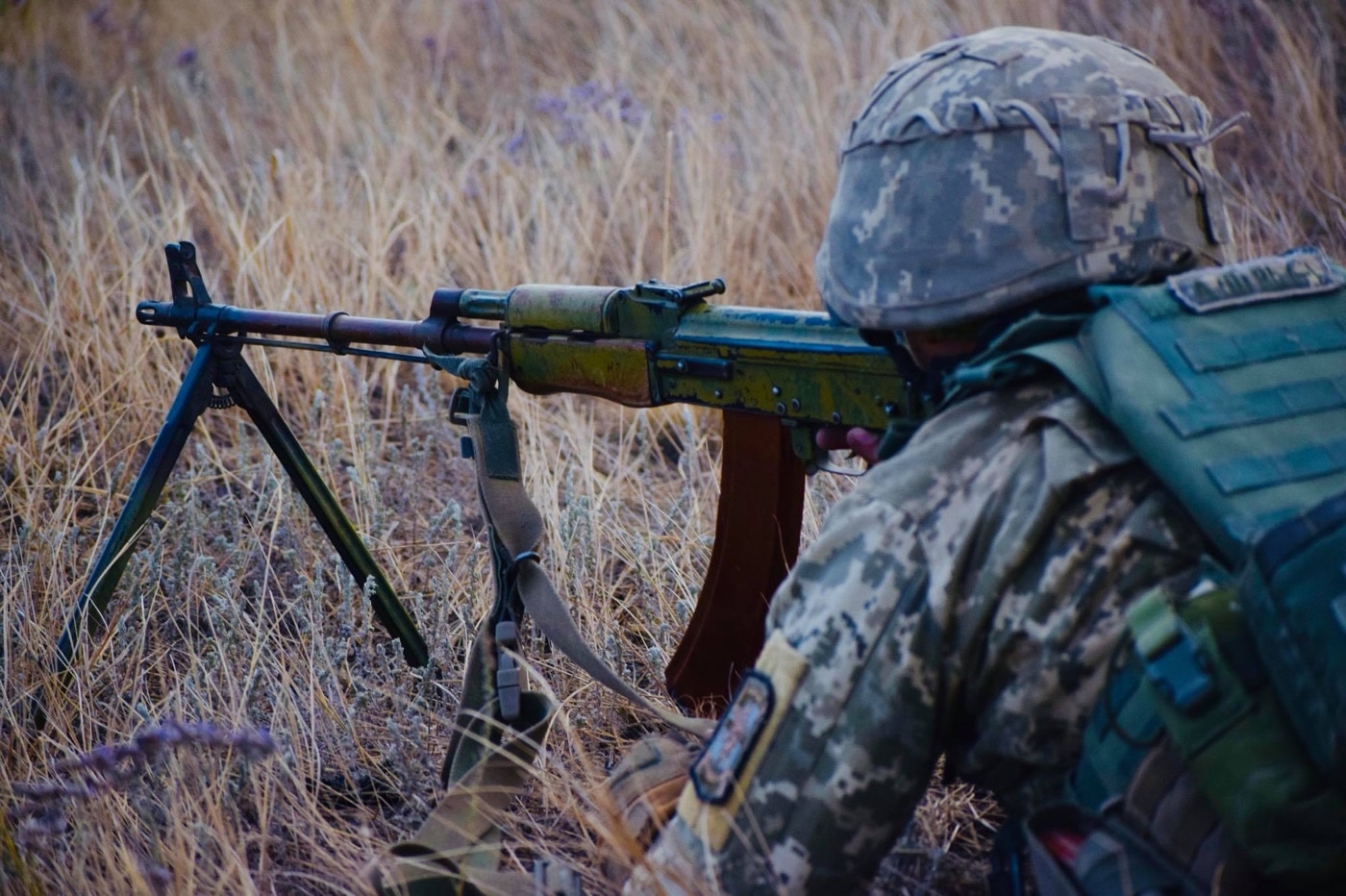
Over time, the wooden furniture was replaced with polymer, but the basic action remained the same. The latest versions of both the AK-74 and the RPK-74 feature side-folding polymer buttstocks. The end result is a mature and effective combat weapon.
Custom RPK-74 Semi-Automatic Rifle
Obtaining a semi-auto RPK-74 of your own requires diligence, persistence, a little mechanical aptitude, and no small amount of cash. A negligible number of factory guns were imported back in the Dark Ages before the various import bans took effect, but they are insanely expensive. As a result, I built mine up from a demilled parts kit.
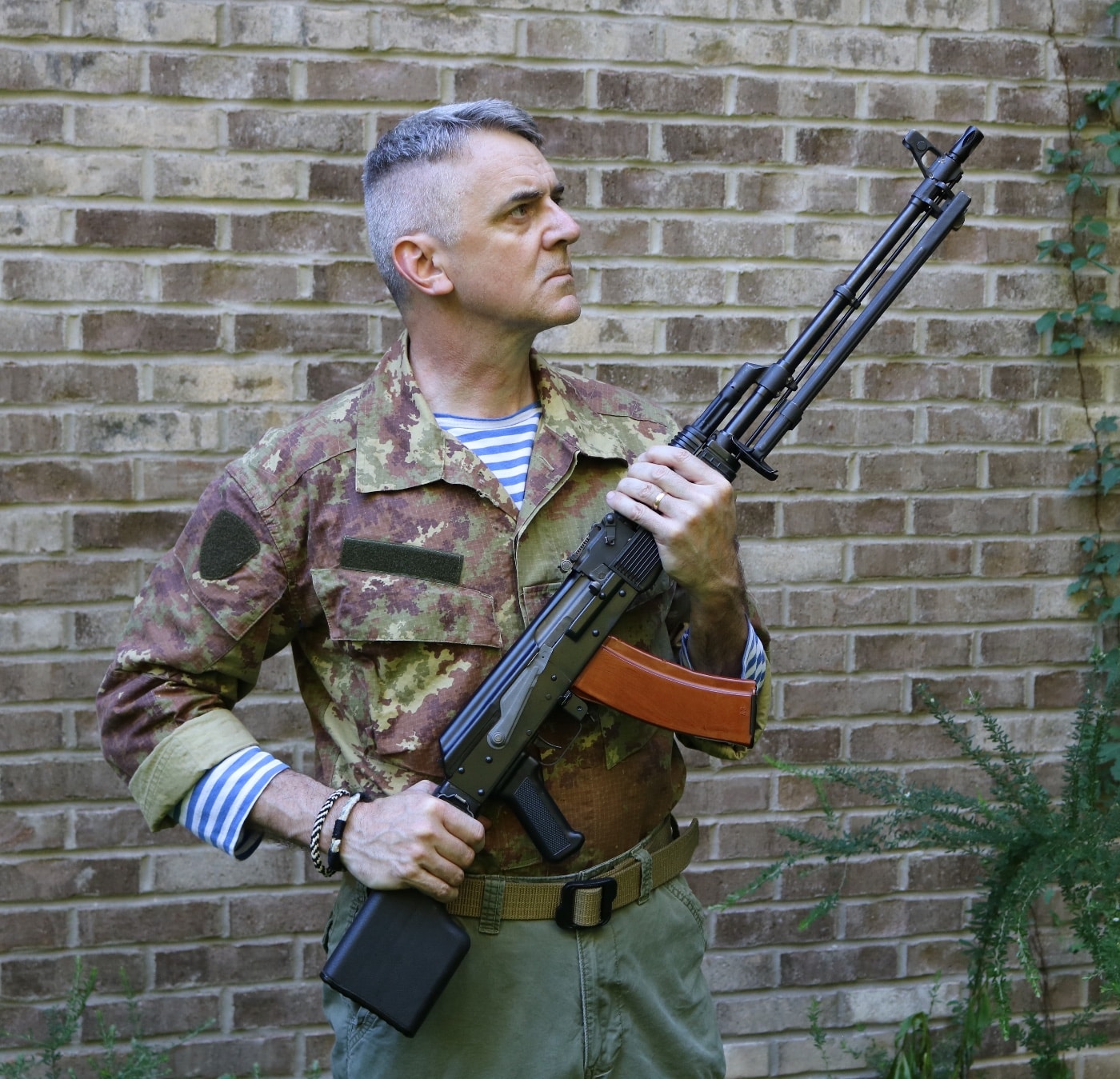
Accumulating all the necessary parts for such an exotic rifle is still a Gordian chore. I bought most of mine from a guy who had been trying to build up an RPK-74 and gave up. The original barrel dates to before the 2005 import ban, as do most of the parts. That makes them expensive. The stripped semi-auto receiver and fire control components were domestically produced as were a handful of other bits needed to keep the build legal. The few small parts that were missing, I had a machinist buddy make for me.
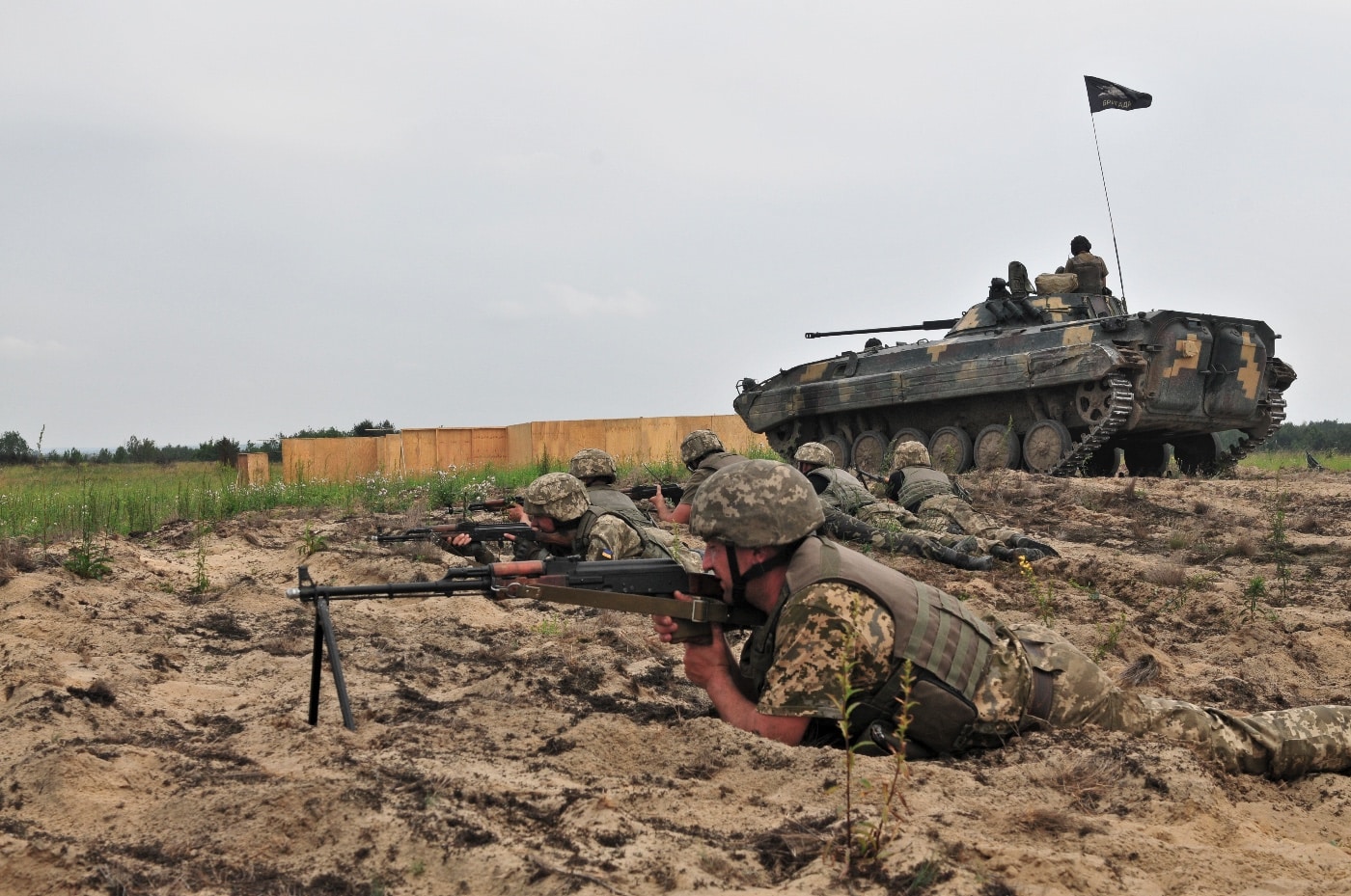
Building up an AK from parts isn’t plug-and-play as might be the same chore for an AR. You have to be able to run a drill press, set rivets, and gauge headspace. I have built a couple of AKs myself at home by hand. However, given what these RPK-74 parts cost, I got an experienced buddy to build this one for me.
With the right tools, you can bodge together a Kalashnikov like this one in an afternoon. In this case, the real challenge was really sourcing the parts. If you’re interested, just haunt GunBroker and expect to pay a decent price for the stuff you need. The end result, while certainly not cheap, will reliably set you apart at the range.

The big honking 45-round box magazine is undeniably awkward, but it lasts a while. It is also interchangeable with the standard 30-round rifle mag. Feeding the rifle involves hooking the front lip of the magazine and then rocking it in place. This chore is indeed a bit slower than the same task on your favorite M4, but it does make it easier to seat a full mag with the bolt closed. As the bolt on the RPK-74 does not lock to the rear on the last round fired, this is a potentially big deal.
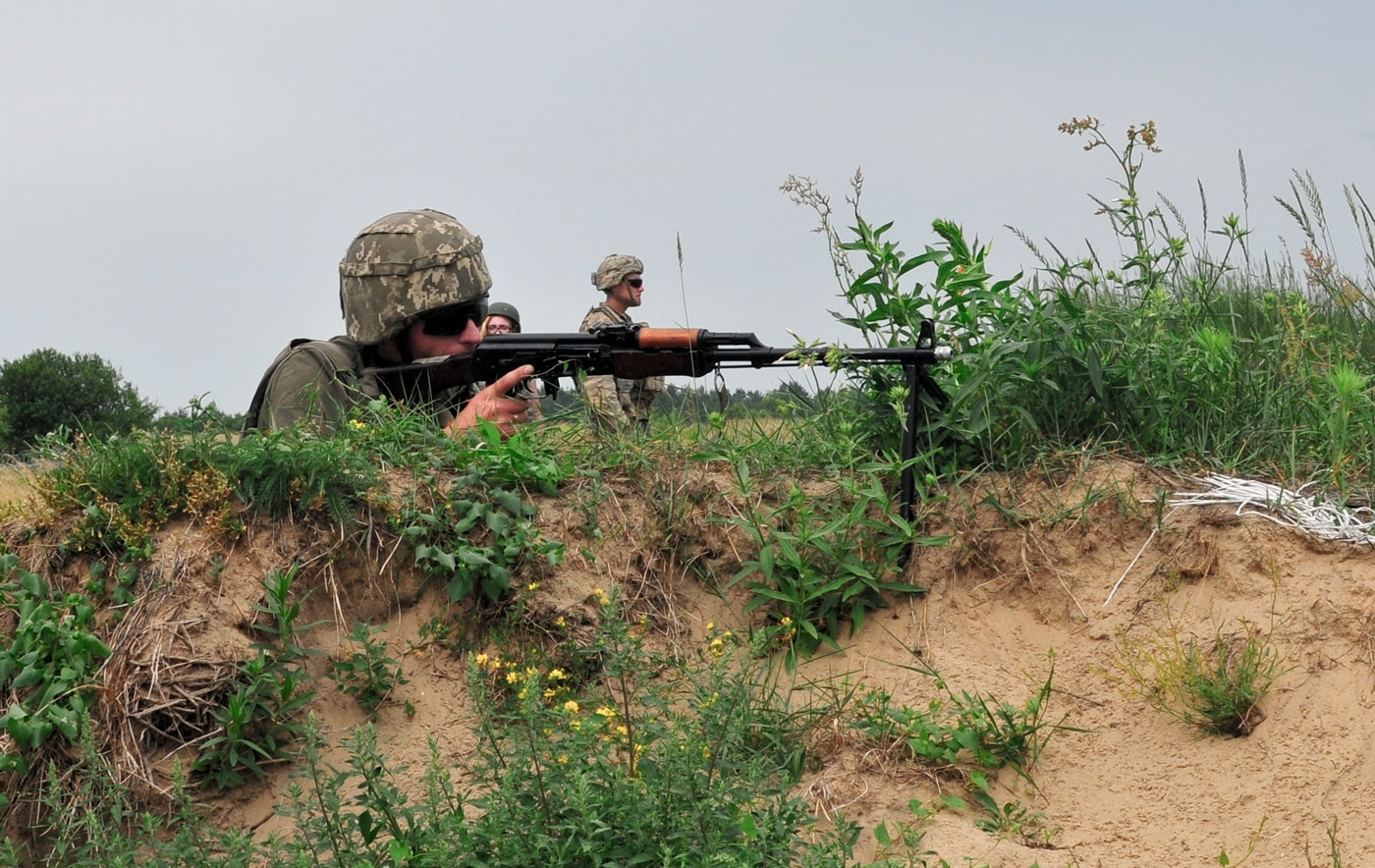
The trigger is long and creepy, but all AK triggers are long and creepy. Unlike the sights on the standard rifle, the rear sight on the RPK-74 is easily adjustable for both windage and elevation without tools. There is also a Combloc-standard optics rail riveted to the left side of the receiver.

The combination of the heavy rifle and the lightweight cartridge makes the overall system almost unnaturally stable and controllable. The 5.45x39mm round does not fare well at extreme ranges, particular in wind. However, when launched in quantity from a stable platform like the RPK-74, recent history has shown it to be plenty powerful to do the deed.
Is the RPK-74 the Best Squad Automatic Weapon?
The original 1961-vintage RPK was developed to replace the RPD LMG, a superb belt-fed machine gun developed during WWII. The RPD has much to commend it. On the surface at least, this seems a step backwards. However, I have a lot of trigger time on both, and the RPK is the better SAW (Squad Automatic Weapon).
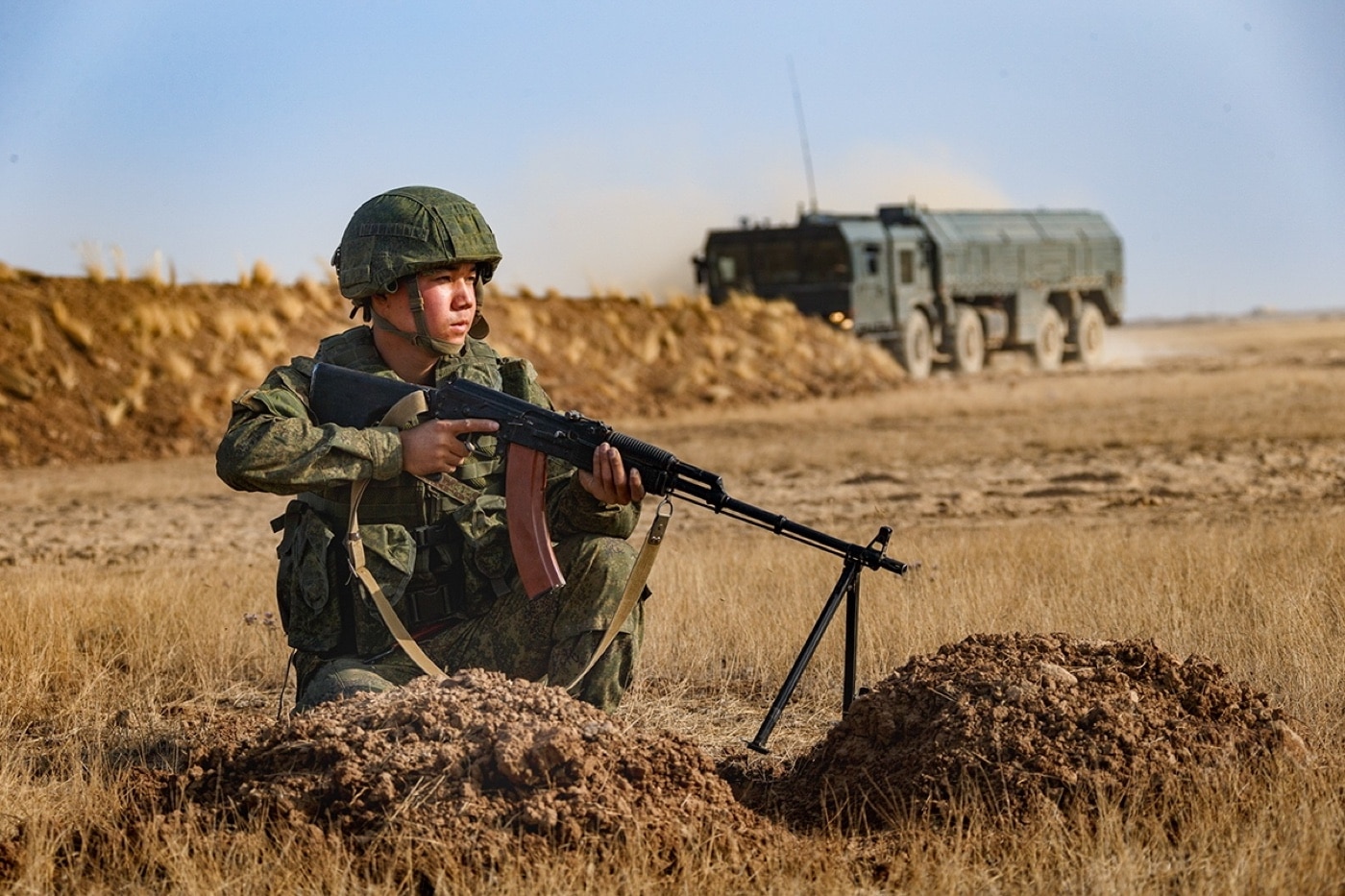
Quicker to load, more tolerant of dirt, and generally easier to maintain, the RPK is the more efficient battlefield tool. The RPK doesn’t have an interchangeable barrel, but neither does the RPD. The RPK-74 is everything the previous RPK is, only half a pound lighter and more readily managed. The RPK-74 is indeed a shockingly solid SAW in my opinion.
Editor’s Note: Please be sure to check out The Armory Life Forum, where you can comment about our daily articles, as well as just talk guns and gear. Click the “Go To Forum Thread” link below to jump in and discuss this article and much more!
Join the Discussion
Read the full article here











